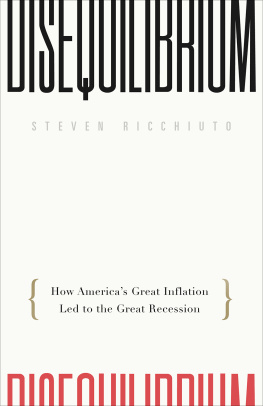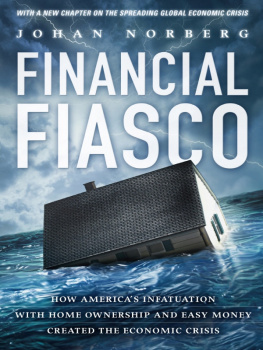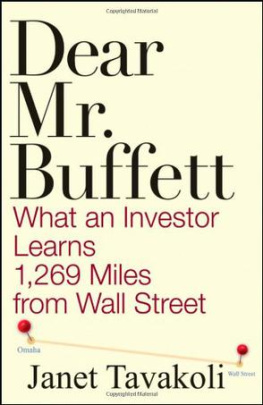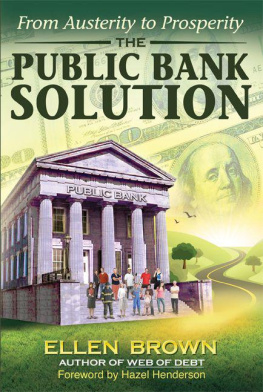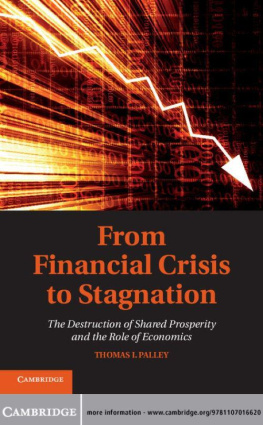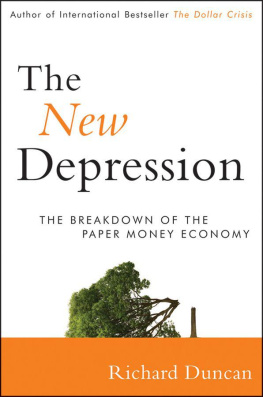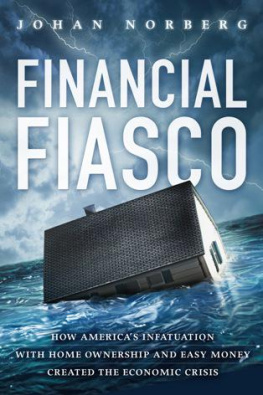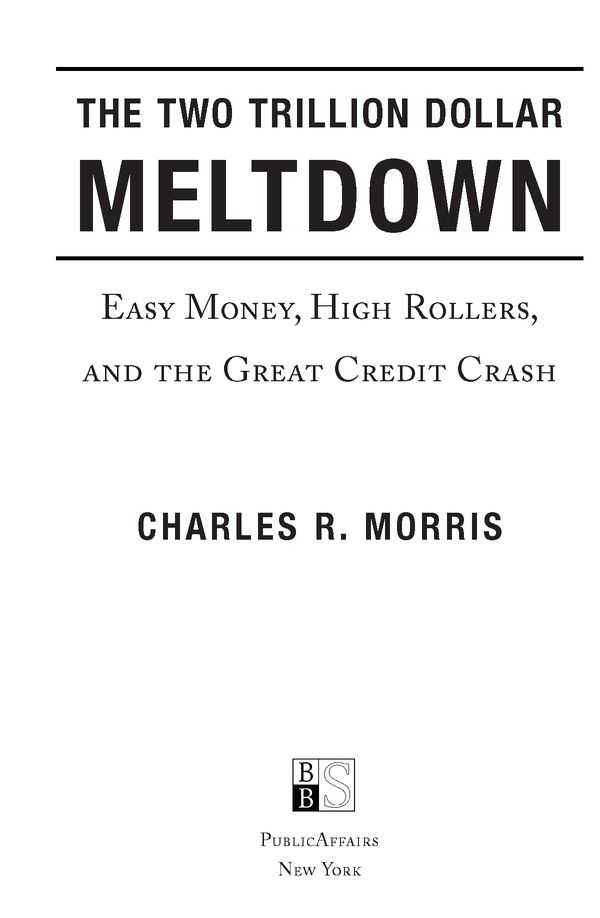Table of Contents
PRAISE FOR THE PREVIOUS EDITION OFTHE TWO TRILLION DOLLAR MELTDOWN
A New York Times bestseller
A Wall Street Journal bestseller
Few writers are as good as Morris at making financial arcana understandable and even fascinating.
Floyd Norris, New York Times Book Review
[The Trillion Dollar Meltdown] is an absolutely excellent narrative of the horror that we have in the credit markets right now. Its a wonderful explanation of how it happened and why its so rotten, and why it will take a long time to unwind.
Paul Steiger, editor-in-chief, ProPublica, and former managing editor, The Wall Street Journal
[A] shrewd primer. [Morris] writes with tight clarity and blistering pace.
James Pressley, Bloomberg News
Morris, a former banker, [earned] rock-solid status as a predictor of the crash. He homes in on the complexity and the paradoxical unpredictability of these financial instruments, which were supposed to manage risk and ended up magnifying it.
New Yorker
Morris provides a comprehensive and jargon-free description of the hideously complex financial securities that have brought the credit system to collapse. It is a remarkable story.
Sunday Times (London)
Charles Morris provides an excellent and timely analysis of the origins, causes, and turbo-charged financial engineering that allowed cheap and excessive debt to create a bloated financial system.
Satyajit Das, author of Traders, Guns & Money: Knowns & Unknowns in the Dazzling World of Derivatives
Amid the hyperbole, several financial-scare books stand out for their high credibility and low hysteria. The Trillion Dollar Meltdown by Charles R. Morris avoid[s] the wild predictions of mass economic destruction, instead giving thoughtful, if alarming, histories and analyses of how we got into the mess were in today.
Susan Antilla, Bloomberg News
Charles Morris, author of The Trillion Dollar Meltdown, isnt one for sugarcoating. His analysis is dour and grim, but certainly not dull. And when read against a backdrop of an ever-weaker economy, increasingly anxious economists, and a stream of gloomy predictions, it can be downright scary. Morris serves up a sharp, thought-provoking historical wrap-up of the U.S. economy and its markets, along with clear scrutiny of todays economic woes.
USA Today
My favorite single book account [of the subprime crisis].
Business & Economics Correspondent Adam Davidson, NPRs Planet Money
Millions of words have been written about the ongoing financial disaster largely caused by the subprime mortgage mess. But the most concise and easiest to understand handbook on the issue is almost certainly Charles R. Morris The Trillion Dollar Meltdown: Easy Money, High Rollers, and the Great Credit Crash.
Robert Bryce, The Texas Observer
[A] masterful and sobering book.
Commonweal
To better understand how the world economy has been pushed to the brink and what the post-crash political/economic environment might eventually look like, this book provides both insight and a possible peek into our future.
Larry Cox, Tucson Citizen
Will provide some important background that will help decipher the meaning behind todays gloomy financial headlines. For those who wonder Why?, heres a place to get some answers!
Watsonville (CA) Register-Pajaronian
FOR CHARLIE-CHAN
FOREWORD TO THE PAPERBACK EDITION
Sometime in October 2008, markets finally got it. The world was stuck in a vicious credit crunch and teetering on the brink of a frightening recession. Stock markets plunged everywhere, currencies whipsawed violently, interbank lending seized up. Governments poured out trillions in loans, equity infusions, and bailouts, while credit markets stayed obstinately stuck on Closed. The U.S. Federal Reserve Bank, in an unprecedented, and unilateral, expansion of its powers, pumped out $1.1 trillion in new lending in about six weeksto banks, broker-dealers, a big insurer, commercial paper issuers, and money market funds.
A $700 billion bank bailout bill was rammed through the American Congress on the promise that it would get at the root cause of the crisis by buying up toxic assets from banks books. European governments, led by Great Britain, trumped the American bailout with the much more focused strategem of equity infusions directly into the banks. Treasury Secretary Henry Paulson, a former president of Goldman Sachs and arch-antagonist of interventional government, was grudgingly forced to follow suit, only to find the queue of petitioners lengthening by the daynot just banks, but insurance companies, state governments, and automobile companies. There was even talk of lending to hedge funds.
For the first time, finance ministers realized how deeply the lethal new financial instruments from America had penetrated global investment portfolios; and how far their own banks, especially in Europe, had gone in emulating the American giants. Europes hope that it could de-couple its economy from Americas vanished, as the continent slid toward negative growth. The petrostatesRussia, Venezuela, Iran, and the Arab stateswho had linked their spending to the infinite gluttony of the American consumer, stared into the abyss. Even economieslike those of Korea, Taiwan, and Brazilthat had maintained strong reserves and mostly sound practices were staggered in the gusts. Iceland, which had taken a riskier path, went bankrupt.
The global crisis, however, was indeed made in America, despite the sins of its imitators and fellow travelers. At its core, it was a crisis of the classic Argentinean varietya debt-fed party, marked by a consumer binge on imported goods, and the strutting of an ostentatious new class of super-rich, who had invented nothing and built nothing, except intricate chains of paper claims that duller people mistook for wealth. This was the same America, of course, that had preached the strait-laced Washington consensusincrease savings, balance budgets, run trade surplusesin the wake of the Latin American and Asian crises of the 1980s and 1990s.
This new edition of the book goes to press in the early months of Year Two of the Great Credit Crunch. Since the first edition was completed in November 2007, when the crash was still in its early stages, a brief summary of Year One is in order.
From todays perspective, the late spring of 2007 seems like a different era. American financial markets were unusually sunny; consumer spending was growing strongly; the market for investment-grade credit was booming; and the premiums demanded to invest in riskier forms of debt were at an all-time low. The S&P 500 jumped more than 9 percent just from March through May.
A first seismic quiver came in mid-June when it was disclosed that two Bear Stearns mortgage hedge funds could not meet margin calls. A Moodys downgrade had reduced the value of certain of their investment-grade subprime mortgage-based bonds. The fund sold some of its bonds to raise money, but most of the rest, it turned out, were not salable at any price. The value of all subprime-related debt tumbled. The experience was frightening, but cooler heads reminded the world that subprime mortgages were a small market and the problem was contained.








